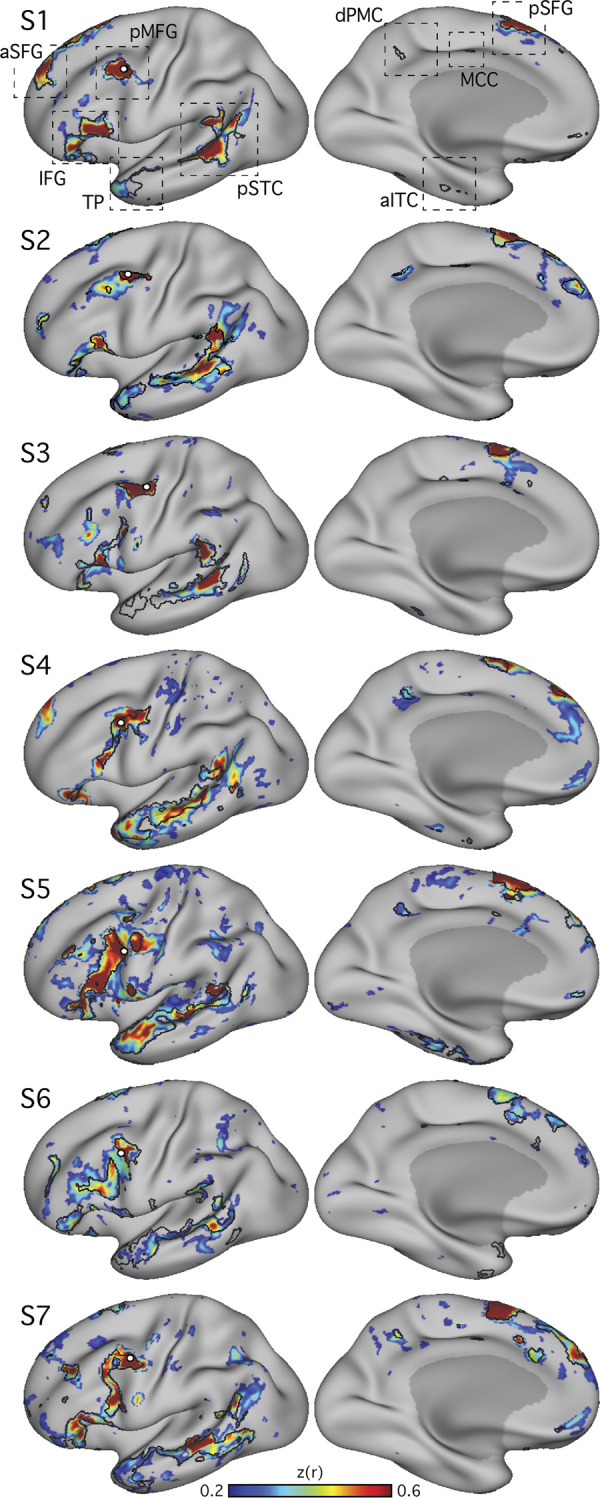Fig. 1.

Within-individual intrinsic functional connectivity identifies a candidate-distributed language network. Seven subjects (S1–S7) each reveal a candidate language network. Seed regions (○) are displayed at or near the posterior middle frontal gyrus (pMFG). Correlation patterns are shown on an inflated cortical surface representation of the left hemisphere. In each panel, the candidate language network defined by data-driven parcellation (see Fig. 4) is shown in black outline. In each subject, the correlation patterns (color bar) show a network that included regions located near classical language regions of the inferior frontal gyrus (IFG; Broca’s area) and posterior superior temporal cortex (pSTC; Wernicke’s area). The network also revealed regions distributed across multiple cortical zones (see dashed boxes at top), including the posterior superior frontal gyrus (pSFG), the anterior superior frontal gyrus (aSFG; appearing in medial and/or lateral portions in different subjects), and the temporal pole (TP). Smaller regions observed consistently in 5 or more subjects included the dorsal posterior medial cortex (dPMC), the middle cingulate cortex (MCC), and the anterior inferior temporal cortex (aITC). Lateral (left) and medial (right) views are shown. z(r), Fisher’s r-to-z transformed Pearson’s product-moment correlations.
